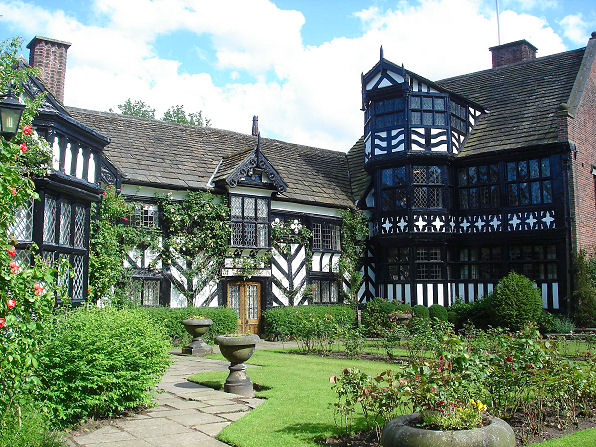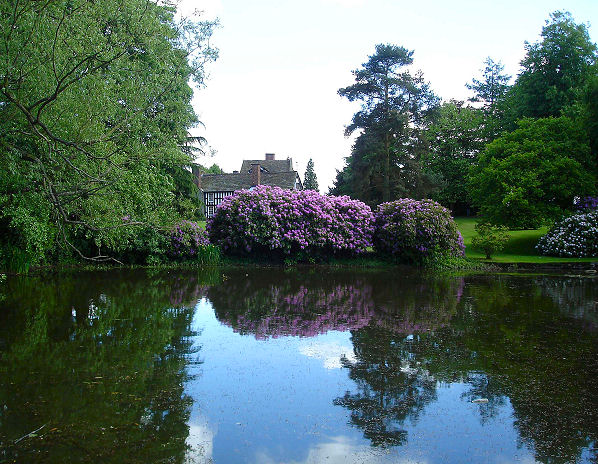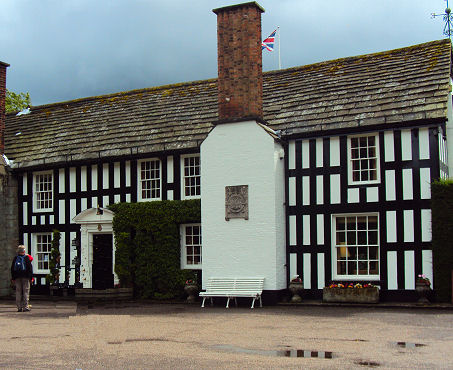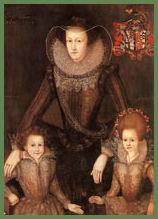Gawsworth Old Hall
Gawsworth Old Hall, which lies in the Cheshire countryside south west of Macclesfield, lies within easy reach of the M6 motorway.

Gawsworth, one of Cheshire's most beautiful historic houses, is a late fifteenth century timber framed manor house built around a courtyard. The house belonged to the Fitton family, Earls of Macclesfield. The hall contains many fine paintings, furniture, sculpture and stained glass. An earlier house once occupied the site which dated from Norman times. This house was replaced in the 15th and 16th centuries. Building commenced in 1480 and continued in stages until about 1600. Since that time, parts of the building have been demolished, and others have been greatly altered.

The charming Entrance Hall has retained its medieval shape and low ceiling. It contains the coat of arms of the present owners, the Richards family and a display of weapons, including a decorative suit of armour dating from the 19th century. The library contains richly carved Tudor chimneypiece and bookcases designed by A. W. N. Pugin. The Long Hall, which contains theprincipal staircase in the house boasts paintings by David Wilkie, J. M. W. Turner and John Constable. The Dining Room's contents include a 16th-century refectory table and an oak escritoire from about 1650.
On the mound that once held the original Norman house on the site stands the tiny medieval chapel, dating from 1369 and still in use, though it has been much remodeled. It was re-dedicated to St. Thomas More when he was canonised in 1935. The chapel contains stained glass windows by Edward Burne-Jones and William Morris.(1834-96)

One of the most famous duels in history was fought over the estates when the third earl died without issue, the duel took place in 1712, the combatants were Lord Mohun and the Duke of Hamilton, the outcome was that both were killed in the course of the duel.
Mary Fitton
 Mary Fitton ( 1578 – 1647) was the younger daughter of Sir Edward Fitton of Gawsworth and Alice Halcroft, and is thought to be the mysterious "Dark Lady" of Shakespeare's sonnets.
Mary Fitton ( 1578 – 1647) was the younger daughter of Sir Edward Fitton of Gawsworth and Alice Halcroft, and is thought to be the mysterious "Dark Lady" of Shakespeare's sonnets.
In around 1595 Mary went to court as a maid of honour to Queen Elizabeth I. She became the mistress of William Herbert, later Earl of Pembroke, and gave birth to a son by him. In 1601 Pembroke was sent to the Fleet Prison after admitting paternity but refusing to marry his mistress, the baby died at birth. The 'Virgin Queen' was so outraged by the affair that she dismissed both Mary and Pembroke from court.
Her relationship with Herbert is the basis for claims that Mary was the "dark lady" of Shakespeare's sonnets. In 1623, together with his brother, Philip Herbert, 1st Earl of Montgomery, William Herbert sponsored the printing of the First Folio of William Shakespeare's plays. Herbert is one of the main candidates for the identity of the Fair Youth in Shakespeare's Sonnets, a character who betrays the poet by having an affair with the Dark Lady, hence the claim that Mary might be the lady. William Kempe, who was a clown in Shakespeare's company, dedicated his Nine Daies Wonder to Mistress Anne (perhaps an error for Mary) Fitton, Maid of Honor to Elizabeth.
Mary scandalized society further by having two further affairs the already married Vice-Admiral Sir Richard Leveson, and Captain Wiliam Polwhele to whom she bore a son. Her mother wrote to her elder daughter, "such shame as never had a Cheshire woman, worse now than ever. Write no more to me of her". She later married Polwhele and the couple had a further child, a daughter. After his death she was married for a second time to a Pembrokeshire captain named Lougher.
Mary died in 1647 and was buried at Gawsworth.
The open air theatre at Gawsworth Hall has a regular schedule of perfornances in June, July and August.
